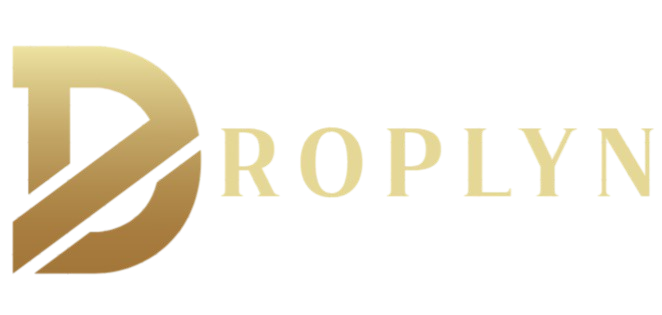LAW
Trulife Distribution Lawsuit: Unveiling the Power Struggle

The Trulife Distribution lawsuit has emerged as a significant event in the business landscape, capturing attention from both industry insiders and the public alike. At its core lies a power struggle that raises questions about integrity, responsibility, and corporate governance. As tensions escalate and legal documents pile up, many are left wondering what this means for the future of Trulife Distribution and its customers. This unfolding drama promises not only courtroom battles but also potential shifts in market dynamics that could affect countless stakeholders. Join us as we delve into the intricacies of this high-stakes legal showdown, exploring its implications and uncovering what it reveals about the industry at large.
Background of the Power Struggle
The power struggle at Trulife Distribution has roots that run deep. Tensions have been simmering for years among key stakeholders. Disagreements over leadership direction and company vision created an environment ripe for conflict.
Internal factions emerged, each vying for control and influence. Employees began to feel the strain as communication broke down. Trust eroded between management and staff, leading to uncertainty about the company’s future.
Market pressures compounded these issues. Competitors were gaining ground while Trulife struggled with its identity amidst ongoing changes.
As decisions became contentious, divisions widened further. This was not just a business disagreement; it felt personal. The stakes escalated, setting the stage for legal challenges that would come to define this tumultuous period in Trulife’s history.
The Lawsuit and Its Allegations
The Trulife Distribution lawsuit centers around serious allegations that could reshape the company’s future. Accusations include breach of contract and fraudulent misrepresentation, which have raised eyebrows across the industry.
Plaintiffs claim that Trulife engaged in deceptive practices designed to mislead stakeholders about financial health. These actions allegedly resulted in significant losses for investors and partners alike.
Additionally, there are assertions regarding inadequate product safety measures. This facet brings into question the integrity of distribution processes within the company.
As legal proceedings unfold, attention focuses on how these claims will impact not just Trulife’s reputation but also its operational strategies moving forward. Stakeholders eagerly await developments, as each revelation adds a new layer to this evolving narrative.
Key Players in the Legal Battle
The Trulife Distribution lawsuit has brought several key players into the spotlight. At the forefront is Trulife itself, a company renowned for its innovative products in the health and wellness sector. Their reputation is on the line, making every move crucial.
On the opposing side are former partners and stakeholders who claim they were wronged. These individuals have united to challenge Trulife’s practices, igniting a fierce legal confrontation.
Legal teams representing both sides are also pivotal in this battle. Each lawyer brings unique strategies aimed at swaying judicial opinion. The courtroom drama revolves around their tactics as much as it does around evidence presented.
Industry observers and customers watch closely. Their opinions may influence public perception of both parties involved, adding another layer to an already complex situation.
Impact on Trulife Distribution and Its Customers
The Trulife Distribution lawsuit has significant implications for the company and its customer base. With the legal battle unfolding, uncertainty looms over product availability and business operations.
Customers may face delays in receiving their orders or notice changes in product offerings. This disruption can lead to frustration among loyal consumers who rely on Trulife’s products for their needs.
Additionally, the brand’s reputation is at stake. As news of the lawsuit spreads, potential customers might hesitate to engage with Trulife due to concerns about stability and reliability.
Moreover, employees are also caught in this turmoil. Job security becomes a pressing issue as the company’s financial health could be affected by ongoing litigation expenses.
The ripple effects of this lawsuit extend beyond boardrooms and courtrooms—impacting real lives that depend on Trulife’s offerings every day.
Potential Outcomes and Resolutions
The Trulife Distribution lawsuit could lead to several potential outcomes, each shaping the future of the company. A favorable ruling for Trulife might solidify its position in the market and restore trust among stakeholders.
On the other hand, a decision against them could trigger major changes in leadership or business practices. This might include restructuring operations or revising internal policies to prevent future disputes.
Settlements are also on the table. Both parties may find common ground through negotiations, which can save time and resources while avoiding prolonged litigation.
Additionally, if regulatory bodies become involved, they may impose guidelines that alter how Trulife operates moving forward. These adjustments would not only affect corporate governance but also impact customer satisfaction and service delivery.
Each scenario presents distinct challenges and opportunities for growth within Trulife’s ecosystem.
Lessons Learned from the Trulife Distribution Lawsuit
The Trulife Distribution lawsuit sheds light on the complexities of business partnerships. It highlights the importance of clear communication among stakeholders. Misunderstandings can escalate quickly, leading to costly legal battles.
Another vital lesson is the need for comprehensive contracts. Ambiguous terms can create loopholes that may be exploited later on. Ensuring every party understands their role reduces conflict and fosters a healthy work environment.
This case also underscores the significance of ethical practices in distribution. Companies must prioritize transparency and fairness to maintain trust with clients and suppliers alike.
It serves as a reminder about staying informed on industry regulations. A well-versed team is better equipped to navigate potential challenges before they arise, preventing disputes from evolving into lawsuits.
Conclusion
The Trulife Distribution lawsuit has highlighted significant issues within the company and its operations. As this legal battle unfolds, it brings to light the complexities of business relationships and governance that can impact stakeholders at all levels.
For customers and partners alike, understanding these developments is crucial. The outcomes will not only shape Trulife’s future but also set precedents for how businesses manage internal conflicts.
As we keep an eye on this unfolding story, one thing becomes clear: transparency and accountability are essential in any organization. The stakes are high, making it vital for all parties involved to navigate this power struggle carefully.

-

 TOPIC6 months ago
TOPIC6 months agoDiscovering Joe’s Carts: A Adventure on Wheels
-

 TECHNOLOGY5 months ago
TECHNOLOGY5 months agoNavigate Mojini V3 Login Like a Pro
-

 BLOG9 months ago
BLOG9 months agollm 申請 statement of purpose
-

 BLOG8 months ago
BLOG8 months agoMyWape: A Deep Dive into the Emerging Video-Sharing Platform
-

 BLOG7 months ago
BLOG7 months agoWhy Aoleonuithietke.com Is the Go-To Resource for Creative Inspiration
-

 ENTERTAINMENT5 months ago
ENTERTAINMENT5 months agoBehind the Screen Magic of Web Series Uncut
-

 TECHNOLOGY6 months ago
TECHNOLOGY6 months agoTransforming Manufacturing with Precision Winding Machines
-

 BLOG9 months ago
BLOG9 months agoModernized mona lisa: The Ultimate Guide